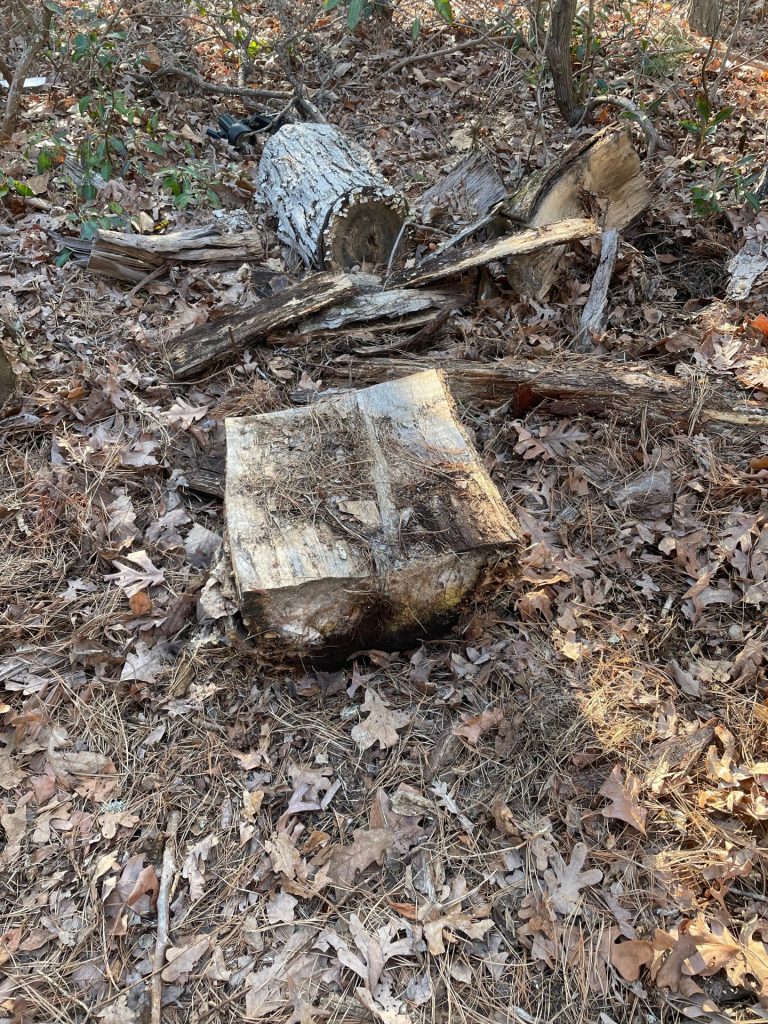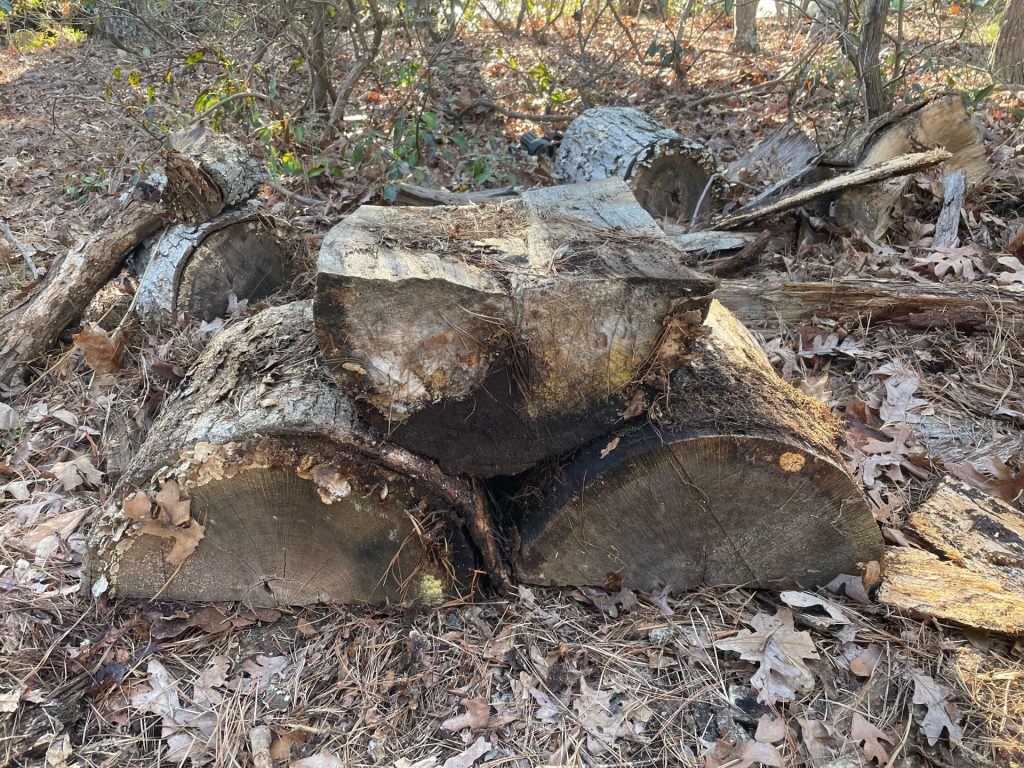
“One mind, any weapon.” ~Marine Corps Martial Arts Program slogan
A few weeks back I was working on some of the remaining white oak I had in a pile on the lot, and ran into a problem I often experience when splitting wood.
Sometimes, when you’re splitting, you don’t have an even surface to split on, or worse, the ground you’re splitting on is spongy and robs you of most of the power of your swing.
That is, when you hit the round, the ground absorbs most of the blow. You get tired more quickly, and split far less efficiently.
Even more annoying is when you can’t seem to get the log to stand upright, which makes it nearly impossible to hit it squarely with the ax, and almost impossible to split.
Moreover, it’s almost never beneficial to split wood directly on the ground, unless you’re splitting with either a maul or a wedge and sledge. If you’re splitting with an ax you run the risk of driving through the round and embedding the bit in the ground – terrible for the bit.
This is why most people, including myself, split wood rounds on top of other wood rounds. The basal wood round “chopping block” helps increase the impulse of your strike, keeping all of the energy centered between the ax and the round you’re splitting.

But the issue I ran into was this: I didn’t have an even round chopping block with a flat bottom, which means I had two choices.
I could split on the ground and run into all of the problems mentioned here, or improve my own chopping block.
I chose the latter.
What You Need: Two Rounds
If you have a bunch of unsplit rounds, and you’re on uneven ground, you can still fashion a chopping block.
All you need are two rounds and an ax (or a wedge and a sledgehammer).
What you want to do here is split the two rounds evenly down the middle of each, so that you have four even halves with flat faces.
Split them in half just as I have done in the image below.

Then, all you need to do is take two of the rounds, and lay them down with their flat faces on the ground, so that the two semicircles of the other sides are facing upwards.
You’re left with two other half-rounds, but you only need one of them.
Take one, and invert it so that the flat face is pointing upwards. Then, wedge the semicircle of this round in the divot created by the two other semicircles of the other rounds you have already laid flat on the ground, as shown in the image below.

The bark that remains on the three rounds will help create a slip-free interface between the three of them, making it very difficult for any of them to slip, and most importantly, this setup is highly versatile.
From here, you can use the half-round on top as your chopping block – just take your round and sit it on the top, like a table.
As you can see in the image below, you can then take a round you want to split and drop it right on top. It’s the perfect setup even when the ground underneath isn’t conducive to splitting.

Advantages of This Technique
There are several significant advantages to this technique.
One is that you can create a flat, level surface, on uneven ground, even on a slope. You can rotate the wedge on top in order to create a level surface even on a slope.
Given this fact, this setup is actually superior to using a whole round that’s flat on either end as a chopping block. A chopping block with flat faces will not stand even on a slope or uneven surface. This setup will.
Another advantage, As I have mentioned already, is that the rounds are very unlikely to slip because the rough bark on the outside of each is basically slip free.
Moreover, if you are trying to split a round that doesn’t stand nicely upright on the block, you can change the angle at which the “block” sits, in order to accompany it.
Another big thing is that, over time, splitting on a chopping block in the traditional configuration, bit-into-the-endgrain, takes a toll on the block, and oftentimes, blocks split. Then you’re without one.
But this configuration will have you splitting into the grain of the wood, edge-on. The block is less likely to split along the grain this way. It can still split, but it will not split as readily as if you were striking it on the endgrain, as you would in the regular configuration.
Keep this technique in mind if you’re ever splitting away from home and you need to improvise a chopping block quickly.
Be safe.
~The Eclectic Outfitter